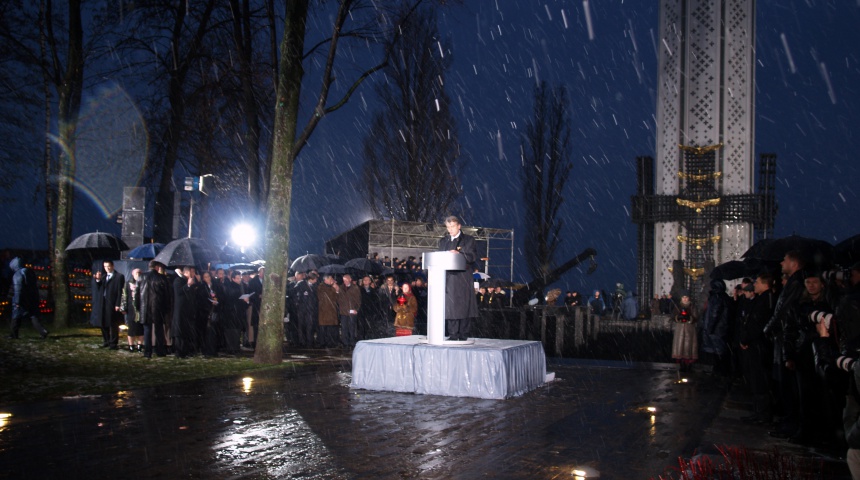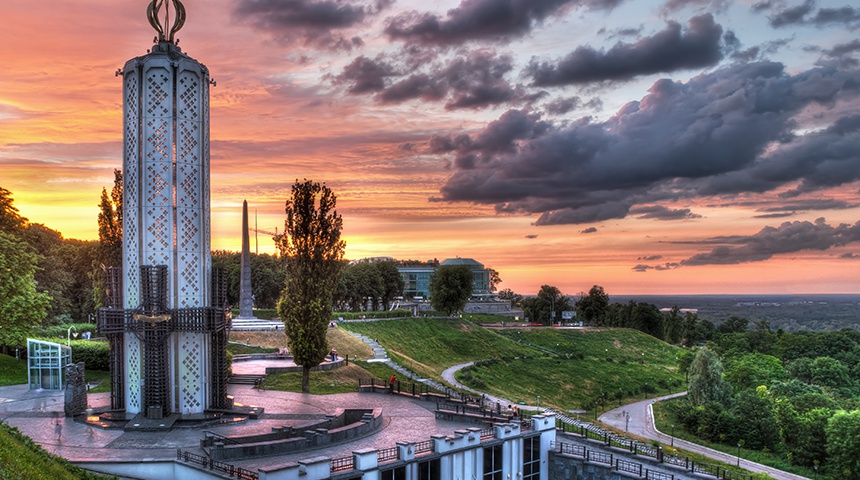History of the National Museum of the Holodomor-Genocide
In January 2006, the Kyiv City State Administration, the Ministry of Culture and Tourism of Ukraine and the Ministry of Construction, Architecture, and Housing and Communal Services announced a nationwide open contest for the best design of the Holodomor Memorial Complex.
On 28 November 2006, the Law of Ukraine “On the Holodomor of 1932-1933 in Ukraine” was adopted, which officially recognised the Holodomor of 1932-1933 as an act of genocide against the Ukrainian people and provided for the construction of a Memorial to the Holodomor victims in Ukraine.

Anatolii Haidamaka, People’s Artist of Ukraine, was the author of the idea for the Memorial Complex. The chief architect of the project is Yurii Kovaliov, and the sculptors are Mykola Obeziuk and Petro Drozdovskyi. People’s Artist of Ukraine Mykola Syadrystyi selected the quotes on the Black Boards alley.
The Certificate of Readiness for Operation of the Building was signed on 24 December 2009. The Memorial was commissioned on 12 July 2010.
The Holodomor Victims Memorial is the first stage. It consists of several parts: two sculptures of angels that serve as a symbolic entrance to the museum, the Millstone of Destiny Square, with artistic sculptures of millstones circling its perimeter, and a central sculpture of a girl titled “Bitter Memory of Childhood.” The “Candle of Memory” is surrounded by a complex of artistic compositions (storks, iron crosses, stone blocks, plates with the years of the crime against the Ukrainian people engraved on them). The Hall of Memory is the central part of the Memorial, which now serves as a museum, and the Black Boards alley features granite plates with a list of settlements, subjected to a special regime of extermination during the Holodomor. Since 2009, a new tradition has emerged in Ukrainian society to commemorate the Holodomor victims every fourth Saturday in November. On this day, Kyiv residents and guests of the capital, with the participation of the leaders of the Ukrainian state, gather at the museum and light candles in memory of the victims of genocide.

On February 18, 2010, a decree of the President of Ukraine about granting a national status to the museum was released.
By the Decree of the President of Ukraine on February 3, 2010 №98, the Memorial was incorporated in the State Protocol and Ceremonial of Ukraine. Foreign heads of state and senior officials who arrive in Ukraine on official visits attend the Holodomor Victims Memorial.
On July 31, 2015, based on the laws “On the Holodomor of 1932-1933 in Ukraine, On Assigning Names (Pseudonyms) of Individuals, Anniversaries and Holidays, Names and Dates of Historical Events to Legal Entities and Objects of Property Rights, On Culture, On Museums and Museum Affairs, and with the support of the public, the museum was renamed from the National Museum “Holodomor Victims Memorial in Ukraine” to the National Museum “Holodomor Victims Memorial”.
On August 8, 2019, following the order of the Ministry of Culture of Ukraine, the official name of the museum was changed to the National Museum of the Holodomor Genocide. The new name aims to emphasise the genocidal nature of the crime against Ukrainians and reflect the main activities of the museum.
Now the National Museum of the Holodomor Genocide exists as a memorial part (“Candle of Memory”). However, the museum part with the appropriate developed infrastructure has not yet been completed.
